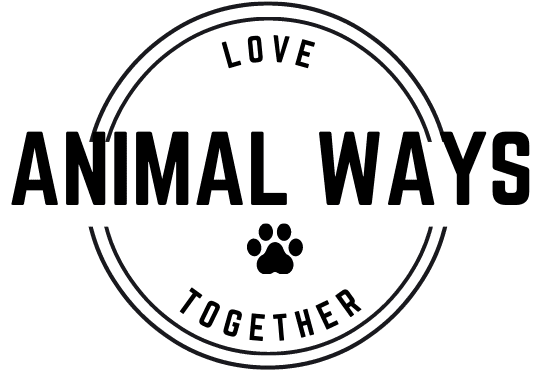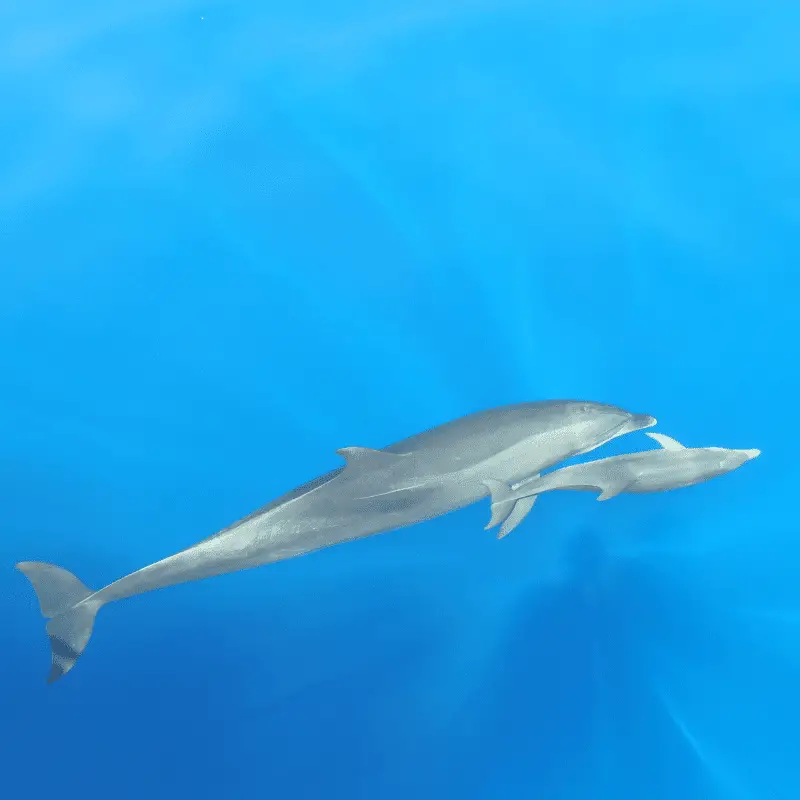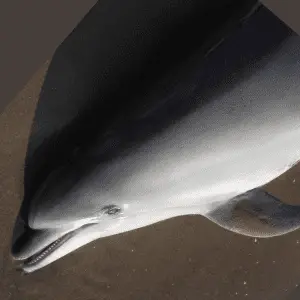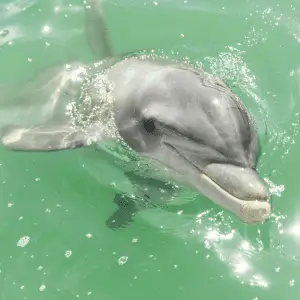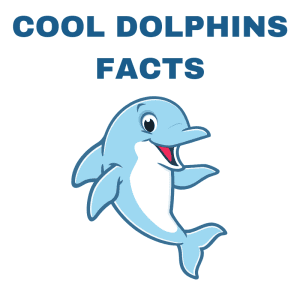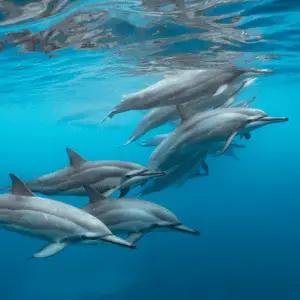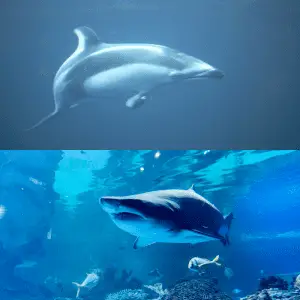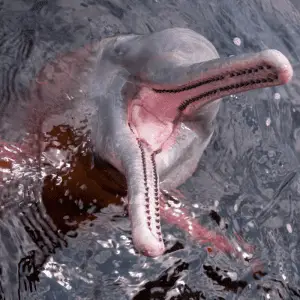Baby dolphins are dependent on their mother’s milk. The mother dolphin feeds her baby from the minute they are born. Calves will drink milk until they are 2-3 years old, but they eat little fish from 4-5 months old. As the dolphin babies get older, they eat more meat. But they must learn to hunt before being weaned off entirely from their mother’s milk.
Forty-two different dolphin species consume various aquatic animals. The eating habit of the baby dolphins depends on the species and the location of their habitat. The quantity and type of marine life the dolphins consume also rely on the rostrum’s shape and the teeth’ size. The places where you can find dolphins can range from rivers to coastal and offshore oceans.
Recommended Read: Can you milk a dolphin?
At what age do dolphin calf’s teeth start showing?
The embedded teeth of a baby dolphin will start coming out of the gum at around five weeks of age, and by the time they are four months, they should have their complete set ready to start catching fish.
Other Foods
For most dolphin calf species, the everyday dietary staple is milk. However, fish is also eaten alongside. However, some aquatic or deep-water dolphin calf species eat jellyfish or squid.
Playful Eating
Since dolphin calves are naturally playful and curious, they accidentally eat additional items. These actions often occur when the dolphins try to examine something or play with them. That is why some baby dolphins eat pieces of seaweed, small shellfish, small rocks, or many other invertebrate animals.
Plastic Threat
Due to the extensive plastic pollution, dolphins are now mistakenly consuming plastic debris. Consuming plastic waste is becoming one of the most common causes of death in individual strandings on beaches.
Food in Different Locations
The type of food that baby dolphins consume primarily depends on their habitat location. For example, the Atlantic bottlenose dolphin calves that live around the coast of Florida mainly start to hunt for catfish and mullet. Indus River calf dolphins generally consume freshwater fishes like carp and gobies. Baby dolphins in the Southern hemisphere’s oceans hunt for squids, shrimp, and other fishes.
Species variation
River calves dolphins consume freshwater fishes and crustaceans, while the rough-toothed dolphins living in the deep ocean mainly depend on squid. The baby spinner dolphins will start to eat jellyfish and krill.
However, almost all baby dolphin and adult species are opportunistic feeders. That means they will eat whatever aquatic food they get in their habitat.
Baby Captive Dolphins Diet
Of course, the baby dolphins living in captivity diet are significantly better and have more options than the wild dolphins.
Most of the common fish, shrimp, and crustaceans that the dolphins love are widely available and can be shipped to the location of the calves.
Still, sometimes, the captive dolphins’ diet depends on the trainers’ preference. For example, trainers generally prefer to feed smaller fish to captive dolphins like smelt.
The reason is that the small size of these fish helps the trainers to offer the dolphins small rewards while training them. It helps them avoid the hassle of cutting larger fish into smaller portions to create bite-sized pieces as rewards.
Recommended Read: What are baby dolphins called?
Two Common Hunt Techniques Taught To A Baby Dolphin
Hunting In A Pod
Mother dolphins mostly use their echolocation technique to navigate underwater and their sonar technique as the main start to the hunt. Both of these need to be taught to the baby calf.
By making clicking sounds and listening, dolphins will find out the location of the school of fish.
Once they locate a school of fish, all the members of a dolphin pod will chase the fish down. The calf will join in with the chase but keep close to its mother.
All the dolphins help create a tight fish ball by herding the entire school.
As they gain control of the perimeter of the school of fish, individual dolphins start to swim into the ball and hunt for their prey. Every pod member takes their turn to hunt down fish, including the calf.
Mouth open wide and ready to swallow the fish whole.
At the same time, other pod members keep watch on the school’s perimeter to ensure no fish escape during the hunting process. This hunting technique is known as a bait ball.
Too Big To Swallow – Grab and Slam
Problems can arise due to large prey! Depending on where the dolphins live, some fish might be too big to swallow. For example, the bottleneck nose dolphins in Costa Rica have yellowtail fish. Yellowtail fish can grow up to 75 cm (30 inches); at full size, this fish is way too big to swallow, even for adult dolphins.
Dolphins overcome this instead of trying to swallow the fish whole by grabbing the fish by the tail and keep slamming it against the water surface or ocean floor. This slamming down helps break the fish into smaller pieces which is easier for the dolphins to consume. This grab-and-slam technique is taught to the baby dolphins living in areas where the fish is way too big to swallow.
